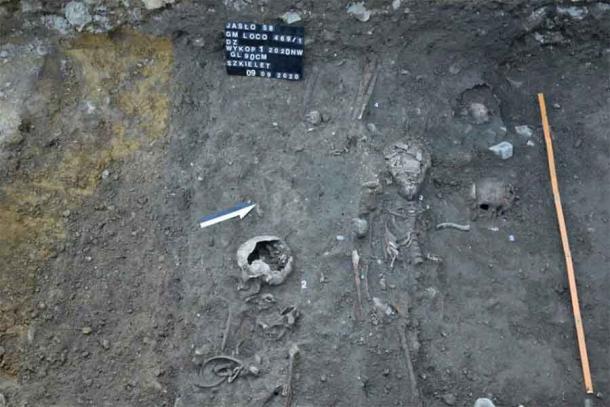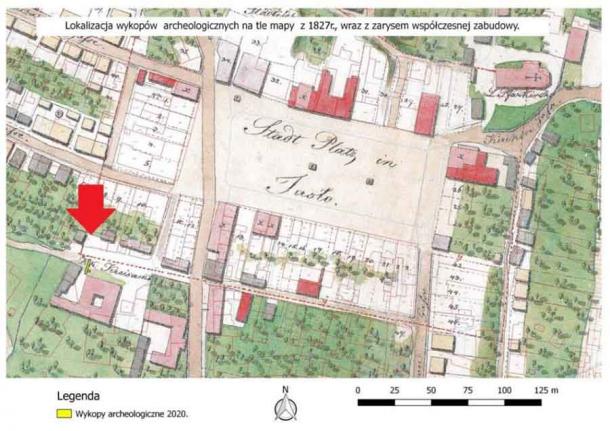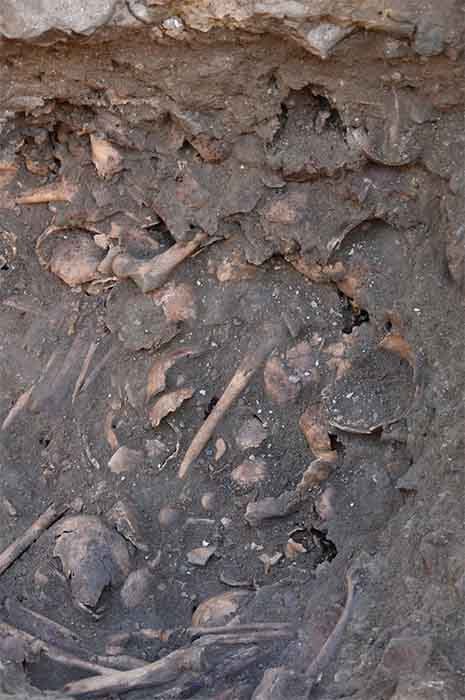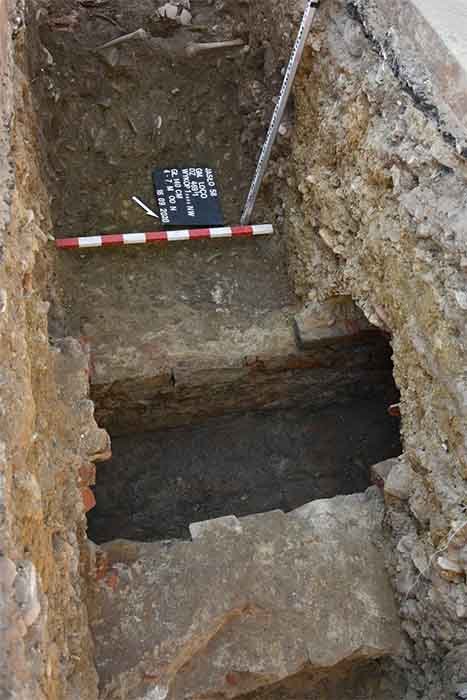Jasło is a town in south-eastern Poland that is located in the heartland of the Doły (Pits). It was here that builders uncovered bones in 2013, and again during renovation work last year. A team of archaeologists have now discovered a medieval cemetery underneath a car park that was once the site of a 14th century monastery, and the tunnel contained eighteen Carmelite skeletons.

Burials discovered under the car park. ( Muzeum Regionalne w Jaśle )
Jasło: A Religious Center in Medieval Poland
By the mid-13th century, Jasło, known then as “Jasiel” or “Jasio ,” was the site of a powerful Cistercian Abbey. On April 23, 1366 AD, the village was granted “ Magdeburg rights ” by King Casimir III the Great, and in 1368 AD the king made a transaction with the Cistercian monks. In exchange for the town of Frysztak, the villages of Glinik and Kobyle, Jasło became royal towns.
According to Dlugosz in Liber beneficiorum Dioecesis cracoviensis , the Carmelite brothers first came to Jasło in the mid-14th century. The church that we see standing today was built by “brothers Stanislaw Cielatko (Czelanthco), Sandomierz scholastic , and Mikolaj of Ciołek arms in 1446 AD after the original was destroyed by the Hungarians.”
The renovation work was being carried out on the site of a cemetery attached to this Carmelite monastery that operated all the way up to the 18th century. The former monastery then became a military hospital and a police station before a fire tore the building apart in 1899.

The location of the excavations against the background of a map from 1827 with the outline of the buildings. (Muzeum Regionalne w Jaśle )
Burrowing into the Carmelite Tunnel of Bones
In 1902 the former military hospital on the Żwirki Square was converted into horse stables. That year archaeologists discovered about 60 Carmelite cellars which were found to contain human bones, and more were discovered in 2013. A spokesperson form the Regional Museum in Jasło said the ongoing archaeological research aimed “to reveal and document the skeletal burials, but there was hope that traces of the monastery buildings or items related to the monks’ daily life” would be discovered at the site at Żwirki and Wigura Square.

Carmelite monk bones discovered under the car park in Jasło. ( Muzeum Regionalne w Jaśle )
The brick tunnel is believed to have been built much later than the cemetery was used, somewhere around the second half of the 19th century. It is still being debated but the team generally think the tunnel was originally used to course sewage or rainwater. The 18 skeletons have all been associated with the Carmelite monastery and 713 archaeologically significant fragments have been unearthed among the skeletons including “322 pottery fragments and 307 fragments of roof tile.”
Peeling Back Layers of Bricks and Bones
In a Facebook Post the Muzeum Regionalne w Jaśle said the 322 pottery fragments were all “vascine [sic] ceramics” and 2 tiny furnace tile fragments were also identified. Among the smaller tools discovered were “61 iron nails, 3 fragments of iron objects, 4 bronze or copper coins, including 1 coins: 1 1851 Austro-Hungarian cruiser, 1 possibly lead tape fragment, 9 glass fragments, small bone comb and fragment a stone architectural detail that may have been part of a door hole.”
The stone-brick canal (tunnel) was measured running east to west cutting through most of the cemetery. Most of the recovered bones were “long upper and lower limbs, skulls, pelvic fragments and blades,” and the scientists reported that the number of smaller bones e.g. the lower limbs, especially the bones of the hands, feet, spins and ribs, “are much smaller.” This array of findings suggests the bones were moved from their original burial spots to the ossuarium.

An opening in the tunnel. ( Muzeum Regionalne w Jaśle )
In conclusion, the researchers think the ossuary was built much later and that during its construction the tunnel was perhaps used as a place to deposit the bones. Analysis of the recovered bones suggests that around 96 people were moved in this way.
Top Image: The center of the Polish tunnel of bones where the Carmelite monk skeletons were discovered. Source: Muzeum Regionalne w Jaśle
By Ashley Cowie
Related posts:
Views: 0
 RSS Feed
RSS Feed

















 April 4th, 2021
April 4th, 2021  Awake Goy
Awake Goy  Posted in
Posted in  Tags:
Tags: 
















